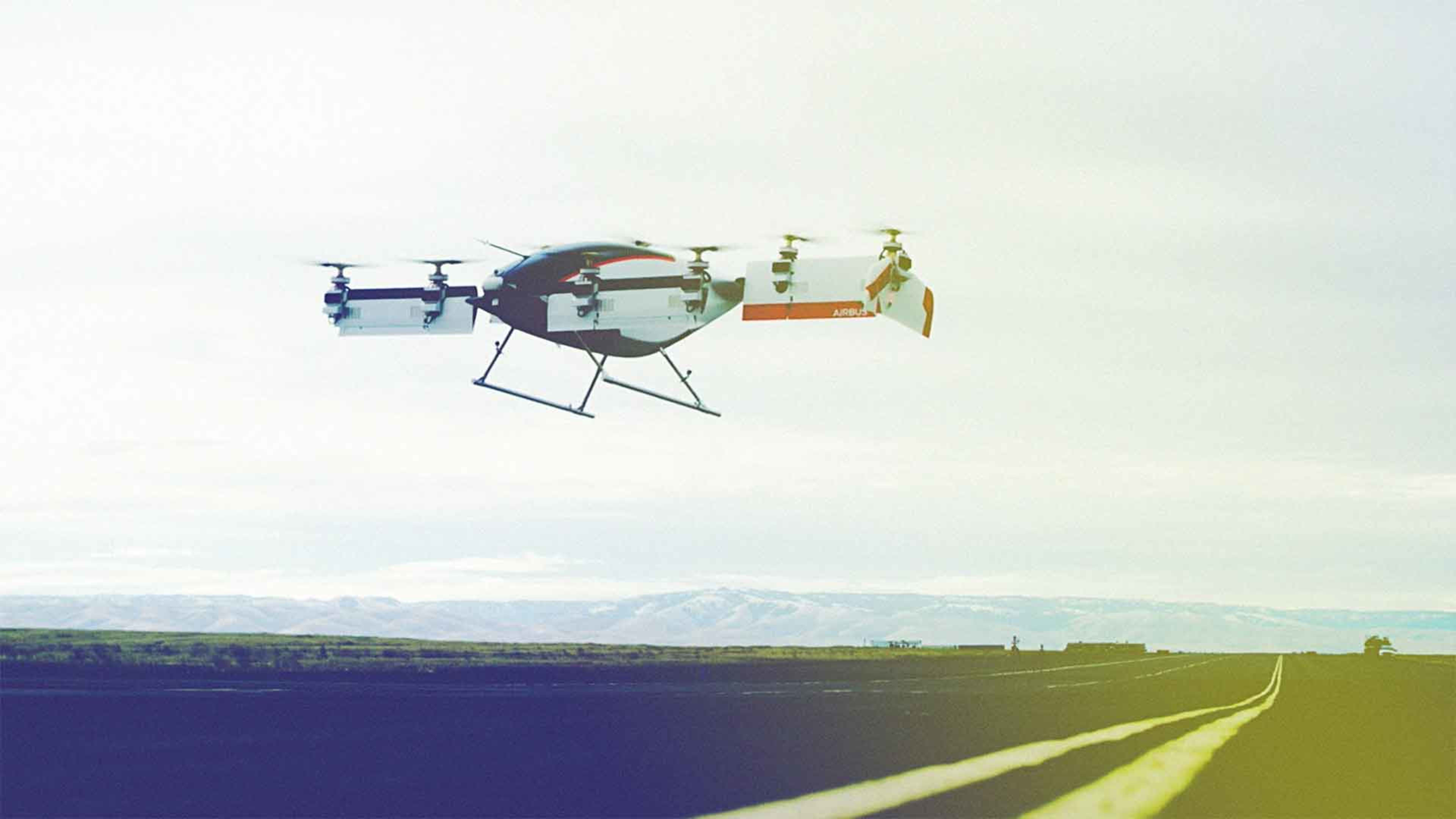Aircraft design is undergoing a lot of changes all at once, with several companies, from startups to industry behemoths, combining AI pilots, electric propulsion, and vertical takeoff and landing capability. Airbus incorporates all of that in its Vahana project. The aerospace giant is developing the air taxi out of its startup-style A3 Silicon Valley skunkworks. The team has just shared video of Vahana’s first flight, which took place on January 31. With its wings and their eight propellers tilted upward, the prototype plane hovers like a helicopter over the tarmac in Pendleton, Oregon.
Vahana rises just a few dozen feet above the ground and comes down a bit clumsily, but it proves that the thing can fly, controlled by its autonomous flight system. And hovering is quite tricky for a plane, says Jeff Mabry, a former U.S. Air Force test pilot who’s directing the flight tests. For most of a journey, Vahana’s wings will be tilted horizontal to the ground, like a regular airplane. But on takeoff and landing, they tilt into vertical orientation, subjecting them to dangerous crosswinds. “One of the first things that we need to establish from right off the bat is whether it can handle a wind from any direction, it can handle a crosswind,” says Mabry, who has worked on fully autonomous craft for the military.
Vahana (named for the winged creatures that carry Hindu gods) will have a lot more proving to do, with longer flights and tests of its sense-and-avoid system. Still the project has come a long way since its inception. “What we’ve done in basically … two years … is something that would take big Airbus five to 10 years probably to do,” he says. “It’s been very rapid.”
Recognize your brand’s excellence by applying to this year’s Brands That Matter Awards before the early-rate deadline, May 3.
